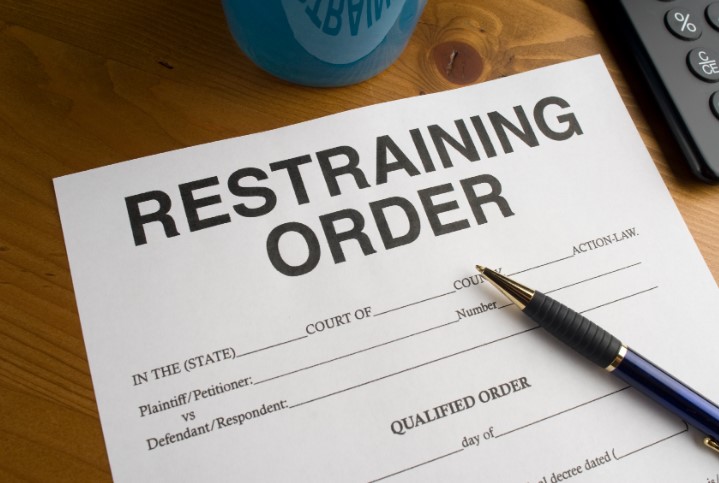How Much Does Divorce Cost?

There isn’t a single answer to the question of “How much does a divorce cost?” because no two divorce proceedings are alike. The cost of a divorce can vary depending on the complexity of the case, the location and whether the divorce is contested or uncontested. A contested divorce, where the parties cannot agree on the terms of the divorce, will typically cost more than an uncontested divorce.
Hiring a lawyer, having kids and the number of hearings and court appearances can also add to the cost of divorce. That being said, it’s important to remember that everyone’s experience with divorce is different and you should seek legal advice to ensure that all your rights and interests are protected.
How much does it cost to file for divorce?
Over 600,000 Americans get divorced annually — in 2020, that number rose to 630,505, which is 2.3{d616ec9028684cd1d98e2ce20ddd83529d937fc361d92b53bbf35263833540c8} of the population. On average, a divorce can cost anywhere from a few thousand dollars to tens of thousands of dollars. Whether or not you hire a divorce attorney will affect the cost and outcome in many cases.
If you hire a divorce lawyer
The cost of hiring a divorce lawyer can vary widely depending on factors such as the location, the complexity of the case and the lawyer’s experience and reputation.
Divorce lawyers may offer an initial consultation for free, but everything after that will probably be billed (in six-minute increments). Generally, lawyers charge an hourly rate, but some may also charge a flat fee for handling a simple or uncontested divorce.
The attorney may also charge additional fees for expenses such as postage, court filing fees, copying costs and other expenses related to the case. Keep in mind that hiring a divorce lawyer is not a one-time cost. You’ll be billed for each service provided, whether it’s a phone call, an email or a court appearance.
Hourly rate
On average, divorce lawyers charge between $225 to $310 per hour, but rates can be lower or higher depending on the lawyer and the location. Attorney’s fees are typically broken down into tenths of an hour for billing purposes. This means you will be billed for the time the lawyer spends working on your case, including any and all communications (phone calls, emails, court appearances) and court filings. Investigators, experts and process servers, if required, will cost extra.
If it’s a large firm and a simple divorce — a divorce with minimal assets and no children involved— you may get support from junior associates, paralegals and other assistants for a lower hourly rate. For most paperwork and preparation, having a junior associate on your case can save you a lot of money.
Flat fee
A flat or fixed fee is a set amount a divorce lawyer charges for their services, regardless of how much time they spend on the case. In other words, you’ll pay a fixed amount for the lawyer’s services. The total amount could vary from a few thousand dollars to around $10,000 or more, depending on the case, but it is generally less expensive than hiring a lawyer on an hourly basis.
Flat fee arrangements are usually used for simple and uncontested divorces. An uncontested divorce refers to a divorce in which there may be more assets, children and complex issues to be resolved than in a simple divorce, but there are no disputes between the parties, and they have agreed on how to settle all the issues related to the divorce.
Alternative fee arrangements (AFAs)
Alternative fee arrangements (AFAs) are alternative ways to pay for legal services other than the traditional hourly billing method. These payments include installments, fixed monthly payments or credit card payments.
AFAs can benefit clients going through a divorce, as they provide more flexibility and control over legal costs. Some attorneys can offer hourly rates with guaranteed minimums and maximums, so you can proceed knowing what you may be paying.
Note: Contingency fees, also called success fees, are an alternative arrangement where a lawyer’s fee is based on the case’s outcome rather than being billed hourly. This fee arrangement is most commonly used in personal injury and employment cases but can also be used in divorce cases. Contingency fees are not considered ethical for family law cases in most states and can even be illegal for divorces. Use caution if this type of fee is mentioned in your consultation.
Without hiring a divorce lawyer
It is possible to get a divorce without hiring a lawyer, which is known as a divorce “pro se” (without representation). In this case, both parties represent themselves and handle the legal process on their own.
Generally, a pro se divorce may be less expensive than a divorce with attorneys involved because there are no legal fees to pay. However, there may be other costs associated with a pro se divorce such as filing fees for the court, the cost of copying documents and any necessary court-ordered classes or evaluations.
A divorce can be a complex and emotional process, and the laws and procedures can vary depending on the state. A DIY divorce in Connecticut, for example, will cost from $300 to $900 or more, depending on your required services. In New York, the costs are much the same.
It’s highly recommended that before considering a pro se divorce, you consult with a local divorce lawyer to be sure you understand the process and agreement you are entering into.
The fees involved in the divorce process
Legal fees are the most expensive part of most divorces — not counting the distribution of assets, which can feel costly to the party giving them up — followed by court costs and other professional and legal expenses.
That being said, the fees involved can vary depending on the specific circumstances of the case and the location where the divorce is filed. Also, in some instances, the court may order a party to pay for some or all of the other party’s legal fees.
The fees involved in the divorce process can include:
- Legal fees (attorney fees, court filing fees)
- Mediation or arbitration fees
- Expert witness fees
- Travel expenses
- Asset and property division costs
- Alimony
- Child support
How much does a simple divorce cost?
In general, a simple divorce is less expensive than a contested divorce, which involves disputes over issues such as property division or child custody. A simple divorce typically costs less because the parties have already agreed on the terms of the divorce and do not need to go through the time and expense of the trial.
The cost of a simple divorce can include:
- Filing fees
- Attorney fees
- Mediation fees
- Additional costs like obtaining any necessary legal documents
Mediation and filing fees
Mediation is the next least expensive plan since you are paying fees but, hopefully, coming to a solid agreement about the dissolution of the marriage before heading to the court to finalize things.
Filing and other court fees are fees charged by the court to file divorce papers. The amount of the fee will depend on the state where the divorce occurs. The most expensive divorces can cost over $12,000. Mediation may also be mandatory before a divorce is granted.
The most expensive divorces usually drag on, increasing attorney fees, and may involve multiple filings to arrive at a final judgment and decree. More than likely, these will involve children and high-value or highly contested assets.
Soft costs
Costs associated with divorce, separate from the legal fees, may include moving to a new household, replacing the assets or objects your spouse was awarded in the divorce, or changes in your insurance and tax status.
Health insurance and life insurance are both affected by divorce, as well as the tax rules around certain financial instruments like Roth IRAs. And don’t forget your family phone plan, Amazon Prime membership and other shared subscription services.
While these are considered soft costs, they are no less urgent, and you should take considerable care to ensure everyone exits the marriage as safely as possible.
Additional costs that may be involved
In addition to legal fees and soft costs that you’ll need to worry about in your divorce, you may need to consider property division costs, alimony and childcare expenses.
Asset and property division
In community property states, assets may be split, with half of the total assets going to one party and half to the other. In other states, the assets are divided into equitable distribution, using amounts decided by more state-specific ways to arrive at a fair deal. In the case of physical items that cannot be split into fractions, such as a house, you may be asked to buy out the other person’s share or accept their money in lieu of retaining the property.
Spousal support (alimony)
Also called spousal maintenance, alimony is money one spouse is ordered to pay the other, included in the divorce judgment. Alimony laws are different in every state but are usually based upon things like the standard of living established during the marriage, financial need and any contribution one spouse may have made to the other’s career or education. This could refer to helping provide housing during one party’s education, for example, or being a stay-at-home parent.
Child support
A child support determination is required if there are minor children involved. The total amount usually takes the form of a monthly payment and is determined by factors such as:
- The child’s educational needs at the time of the divorce
- The child’s educational needs in the future
- Any health needs the child may have
- The cost of childcare
- The income of both parties
Divorce with children involved can be particularly traumatic and expensive. This is why the question of child support is brought up and settled at every divorce to ensure the child will remain safe and cared for.
Options for reducing the cost of divorce
As with many divorce concerns, the availability and cost of services vary by state. In any case, for those who can’t pay divorce expenses on their own, some help is available. For lower legal bills, look for a limited assistance compromise, where you shoulder some of the work yourself. Or find a pro bono program that will help you with your divorce.
Limited assistance representation (LAR)
Limited assistance representation (LAR) is a service in which an attorney provides limited representation to a client in a specific aspect of a legal matter. This can include preparing legal documents, providing advice or appearing in court on a limited basis.
LAR is used in cases where the client is able to handle some aspects of their case on their own but needs help with specific issues. In a divorce case, LAR can be a cost-effective option for those who can’t afford full representation or for those who only need help with a specific aspect of their case.
Pro bono representation
In pro bono programs or arrangements, the attorney provides legal services at no or very low cost. Pro bono divorce attorneys may serve a single category, such as single mothers, or certain types of divorce, like those involving domestic abuse, while there are whole firms that may devote themselves entirely to pro bono cases.
Find a pro bono lawyer according to your needs by looking at online divorce services, legal assistance organizations, and resources from the state or local bar association sites, or go to the legal clinics put on by law schools.
The Bottom Line
The financial impact of divorce can vary widely. A simple and uncontested do-it-yourself divorce, in which all parties are ready to sign the divorce decree, can be accomplished with minimal costs in the low hundreds of dollars. A highly contested and painful proceeding involving money, property or children can cost hundreds of thousands.
Lawyers can charge either by the hour (or every six minutes, which is 10{d616ec9028684cd1d98e2ce20ddd83529d937fc361d92b53bbf35263833540c8} of an hour), flat or fixed fees, alternative fee arrangements or even pro bono. Costs associated with divorce, in addition to the lawyer’s bill, include court fees, filing fees, mediation, expert witnesses, investigators, consultants, asset division, alimony and child support.
Legal fees are the most expensive part of most divorces. Mediation is the least expensive plan beyond the DIY divorce, where both parties hopefully come to an agreement before finalizing at the courthouse. More expensive are longer-term divorces, usually involving children or property.
In community property states, assets can be split half-and-half between the divorcing parties. Other states arrive at a fair distribution in other ways: you might have to buy your ex-spouse out of a house or other indivisible property, for example.
Divorce with children involved can be particularly traumatic and expensive, which is why the question of child support is brought up and settled at every divorce. Child support is calculated based on the child’s educational and health needs, daycare or childcare and both parties’ incomes.
Before making this life-altering decision, seek legal counsel and be prepared for the financial and emotional burdens.







